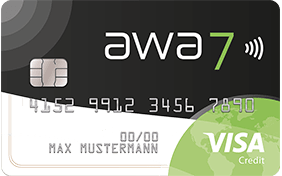Financial Independence: Discover The Path To Personal Freedom Today
Advertiser
Financial independence is achieved by understanding financial basics, utilizing diverse income strategies, managing debt effectively, and maintaining a disciplined approach via budgeting and investing. Overcoming challenges through resilience and creating a sustainable financial plan ensures long-term security and personal freedom.
Achieving financial independence is a goal many aspire to, yet it often seems elusive. In this guide, we’ll explore the fundamentals of reaching this state of personal freedom, discuss effective strategies to achieve financial independence, and address common obstacles in the journey. By understanding these key aspects, you can build a sustainable plan to secure your future and live life on your own terms.
Understanding the Basics of Financial Independence
Financial independence is the state where an individual has enough income to cover their living expenses for the rest of their life without being employed or dependent on others. Understanding its basics involves grasping how to manage and grow your income effectively.
The Importance of Financial Literacy
To achieve financial independence, developing strong financial literacy skills is crucial. This means being knowledgeable about budgeting, saving, and investing. Developing this skill set is the first step towards managing your finances effectively.
Budgeting as a Foundation A well-structured budget helps you track your expenses and identify areas for potential savings. It’s essential to allocate your resources wisely to facilitate savings and investments, which are necessary for financial autonomy.
Saving and Investing Wisely
Saving a portion of your income consistently lays the groundwork for financial stability. Beyond saving, investing in various vehicles like stocks, bonds, or real estate can generate passive income, accelerating your path to financial independence.
Diversification is Key To mitigate risks, diversifying investments is imperative. Spreading investments across different asset classes can help protect against market volatility and ensure consistent financial growth.
The underlying principle of financial independence is to have control over your financial destiny, minimizing reliance on external income sources. By mastering these basics, you’ll be well-equipped to embark on the journey towards personal financial freedom.
Strategies to Achieve Financial Independence

Crafting effective strategies is crucial on the path to financial independence. It’s about making wise financial decisions and executing them consistently. One key strategy is establishing multiple income streams.
Developing Multiple Income Streams
Relying solely on one source of income can be risky. Consider developing additional sources such as side businesses, freelance work, or investments. These extra streams provide financial security and enhance your earning potential.
Investing in Yourself Another vital strategy is investing in your skills and education. This could mean acquiring new qualifications or enhancing existing skills to increase your earning capacity. This self-investment pays dividends over time, opening new career opportunities and potential salary increases.
Practicing Smart Budgeting
Crafting and sticking to a comprehensive budget allows you to manage your expenses and allocate funds for savings and investments. Prioritize essential expenses and identify areas where you can cut back to boost your savings rate.
Embracing Frugality Living below your means and embracing frugality is essential. This involves being mindful of spending, avoiding debt, and focusing on what truly matters. Over time, this practice builds a robust savings buffer, vital for long-term financial independence.
Effectively implementing these strategies can significantly shorten the path to achieving financial independence, providing control over your financial future and enhancing your quality of life.
Common Challenges and How to Overcome Them
On the journey to financial independence, people often encounter several challenges that can hinder progress. One major obstacle is managing debt.
Overcoming Debt Challenges
Debt is a common hindrance to financial independence. Tackling high-interest debt such as credit cards should be a priority. Implementing the debt snowball or avalanche method can effectively reduce and manage debt over time, providing clearer financial pathways.
Maintaining Motivation and Discipline Staying motivated can be difficult, especially when progress is slow. Setting short-term goals and celebrating small victories are essential to maintaining enthusiasm and discipline. Regularly reviewing your progress helps reinforce your commitment to the journey.
Dealing with Unexpected Expenses
Unforeseen expenses can derail financial plans. Building an emergency fund is crucial for these situations. It acts as a financial cushion, ensuring that unexpected costs don’t impact your overall financial strategy heavily.
Navigating Market Volatility Market fluctuations can intimidate investors. Diversification and a long-term investment approach are key strategies to mitigate risks. Understanding that markets have cycles helps maintain a steady course during turbulent times.
Confronting these challenges with practical strategies not only paves the way to financial independence but also strengthens resilience, fostering a stable and secure financial future.
Building a Sustainable Financial Independence Plan

Creating a sustainable financial independence plan involves setting up systems that ensure longevity and adaptability. Key to this is establishing clear goals and milestones.
Setting Clear Financial Goals
Define specific, measurable, achievable, relevant, and time-bound (SMART) goals. These provide direction and benchmarks for success, helping maintain focus on long-term objectives.
Regular Monitoring and Adjustment Consistently reviewing financial plans and progress is essential. This allows for adjustments to strategies in response to life changes, market conditions, or unforeseen challenges, keeping the plan adaptable and resilient.
Implementing Automated Savings
Automating savings and investments ensures consistent contributions towards financial goals. Automatic transfers to savings accounts or investments minimize manual effort and foster disciplined saving habits.
Ensuring Diversification A diversified investment portfolio reduces risk and improves stability. Including a mix of assets like stocks, bonds, and real estate caters to different risk appetites and financial goals, safeguarding the plan’s sustainability.
By embedding these practices into your plan, you can create a robust framework that supports lasting financial independence, empowering you to manage your finances with confidence and ease.
Unlocking the Path to Financial Independence
Pursuing financial independence is a journey full of challenges, strategies, and continuous learning. By understanding the basics, you build a solid foundation. Embracing diverse strategies enhances your capability to achieve long-term goals.
Recognizing common challenges and overcoming them with resilience strengthens your plan. Constructing a sustainable approach ensures flexibility and security against life’s uncertainties.
Each subtle adjustment and strategic choice empowers you to live a life of financial freedom. Stay dedicated, and let your plan guide you on this transformative journey towards personal freedom and financial security.
FAQ – Common Questions About Achieving Financial Independence
What is the first step towards achieving financial independence?
Understanding the basics, including budgeting, saving, and investing, is the essential first step to financial independence.
How can I effectively manage debt on the path to financial independence?
Implement strategies like the debt snowball or avalanche methods, focusing on paying off high-interest debts first.
What strategies can help create new income streams?
Consider options like freelance work, starting a side business, or investing in stocks or real estate for additional income.
How do I stay motivated during this journey?
Set short-term goals and celebrate small wins. Regularly reviewing your progress helps maintain motivation and discipline.
Why is diversification important in achieving financial independence?
Diversification reduces risk by spreading investments across asset classes, ensuring more stable financial growth.
Can automating savings contribute to my financial independence plan?
Yes, automating savings ensures consistent contributions, aiding in disciplined saving and long-term financial security.






